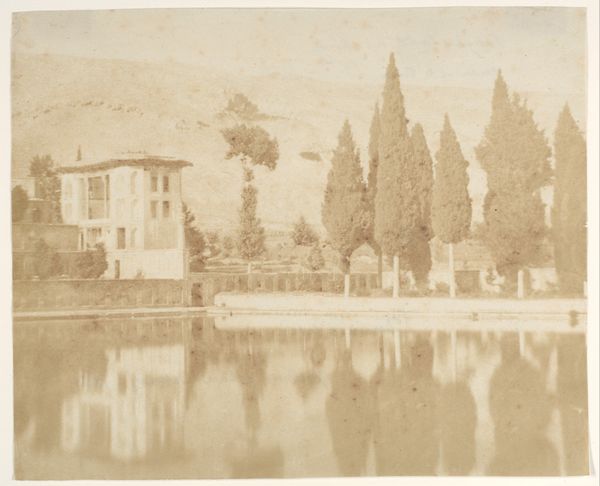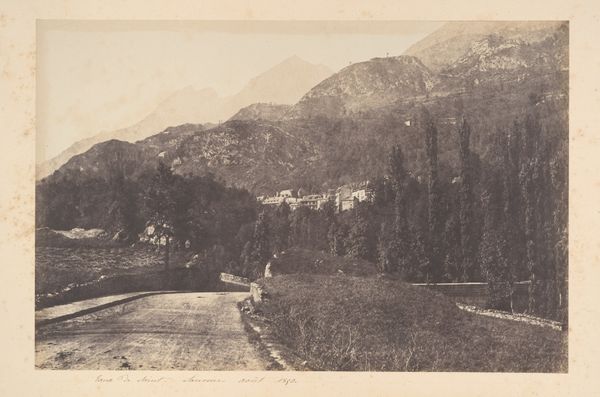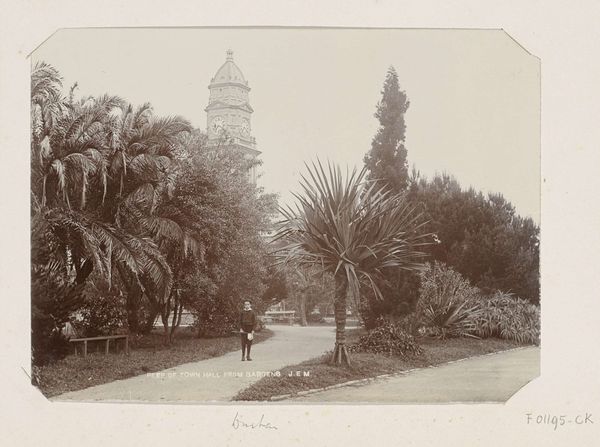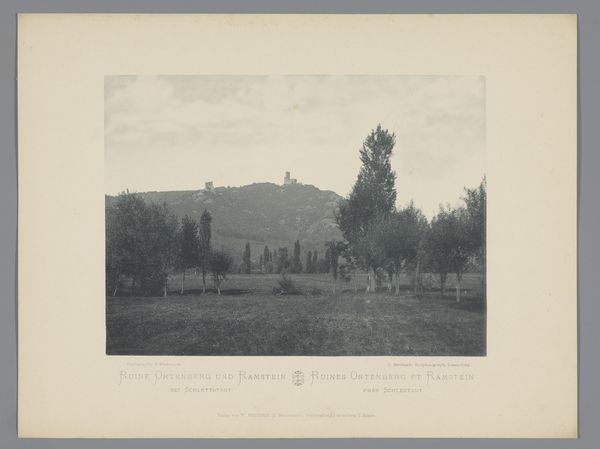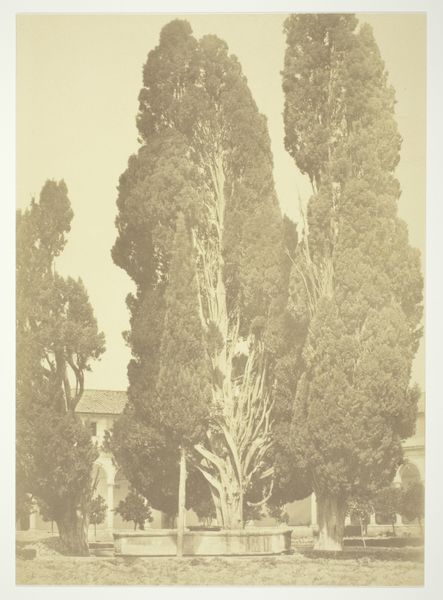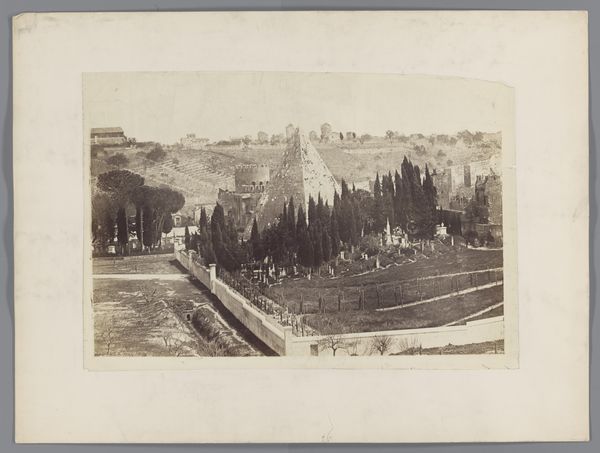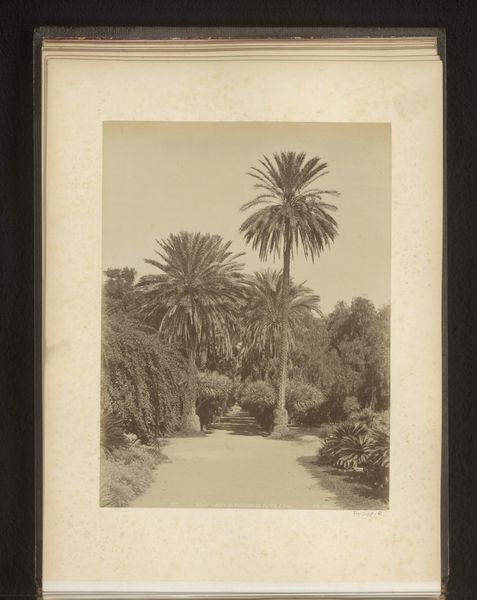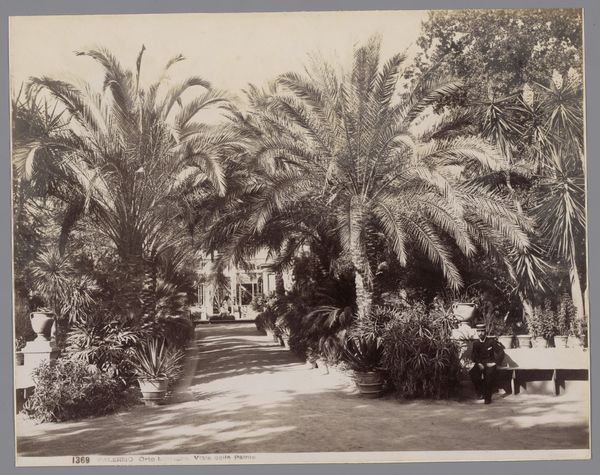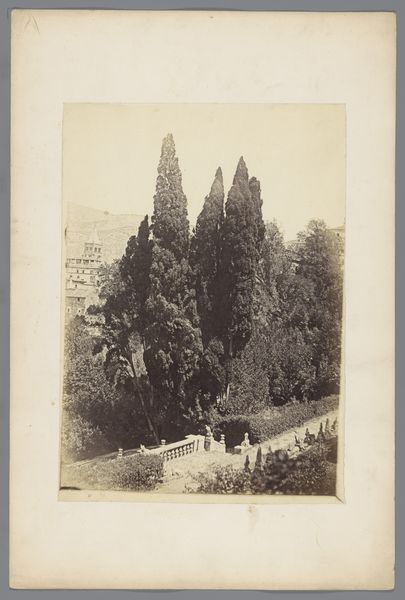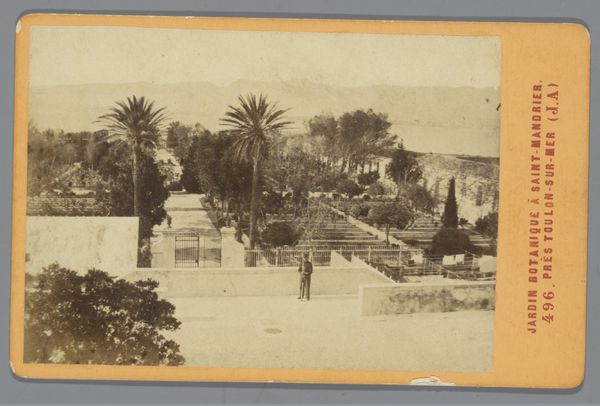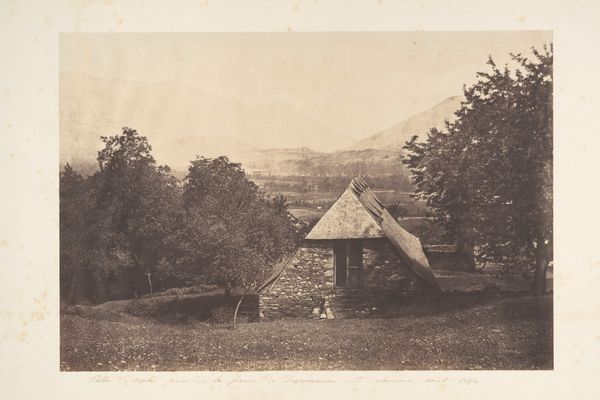
photography
#
garden
#
pictorialism
#
landscape
#
photography
Dimensions: height 196 mm, width 249 mm
Copyright: Rijks Museum: Open Domain
Curator: Welcome. Today, we’re exploring "Groep mensen in de tuin van Villa Sofia in Palermo," a photograph attributed to Giuseppe Incorpora, dating between 1856 and 1914. Editor: What strikes me immediately is this hazy, almost dreamlike quality. It feels both timeless and like a faded memory. Curator: Absolutely. The sepia tones give it a specific historical weight, don't they? The technique, very much of its time, highlights the process of early photography. The material itself, the paper and the chemicals used to develop the image, tell a story of labor and developing technology. It prompts thoughts about consumption, photography's effect on leisure, the making of 'snapshots' among the bourgeois... Editor: Indeed. And looking closely, you see how carefully Incorpora has placed these figures within the frame. Their poses, the way they are dwarfed by these colossal trees, speaks to the social hierarchies of the era, the power of the landscape to command respect, even fear. Curator: Those towering cypresses do have a kind of somber grandeur. The carefully cultivated garden space suggests control, manicured nature—symbols of prosperity. Editor: There’s a tension between this formal, rigid garden structure and the suggestion of untamed wilderness beyond. The image offers the garden path forward, but there are glimpses of unknown, wilder regions. And the group—the very idea of the group in the title—suggests community, but also perhaps conformity and social pressure, the 'rules' within which individuals perform their status. Curator: Thinking of those rules: Pictorialism as an art movement sought to elevate photography to the status of painting. The soft focus, the carefully arranged composition—it's all calculated to suggest artistic intent beyond mere documentation, aiming to find a place as true art rather than something mass-produced and "soulless". Editor: A place of importance! The photograph presents itself as a scene carefully envisioned by the photographer as worthy to exist in collective cultural memory and continuity. And the hazy quality adds an element of romance to these historical, social codes on display. It almost asks us to forgive some aspects of history for their 'artful' representations. Curator: A truly thought-provoking piece then, about its time and about the ongoing making of it as material history today. Editor: Yes, and an exercise in unlocking layers of meanings contained within one tranquil garden.
Comments
No comments
Be the first to comment and join the conversation on the ultimate creative platform.
